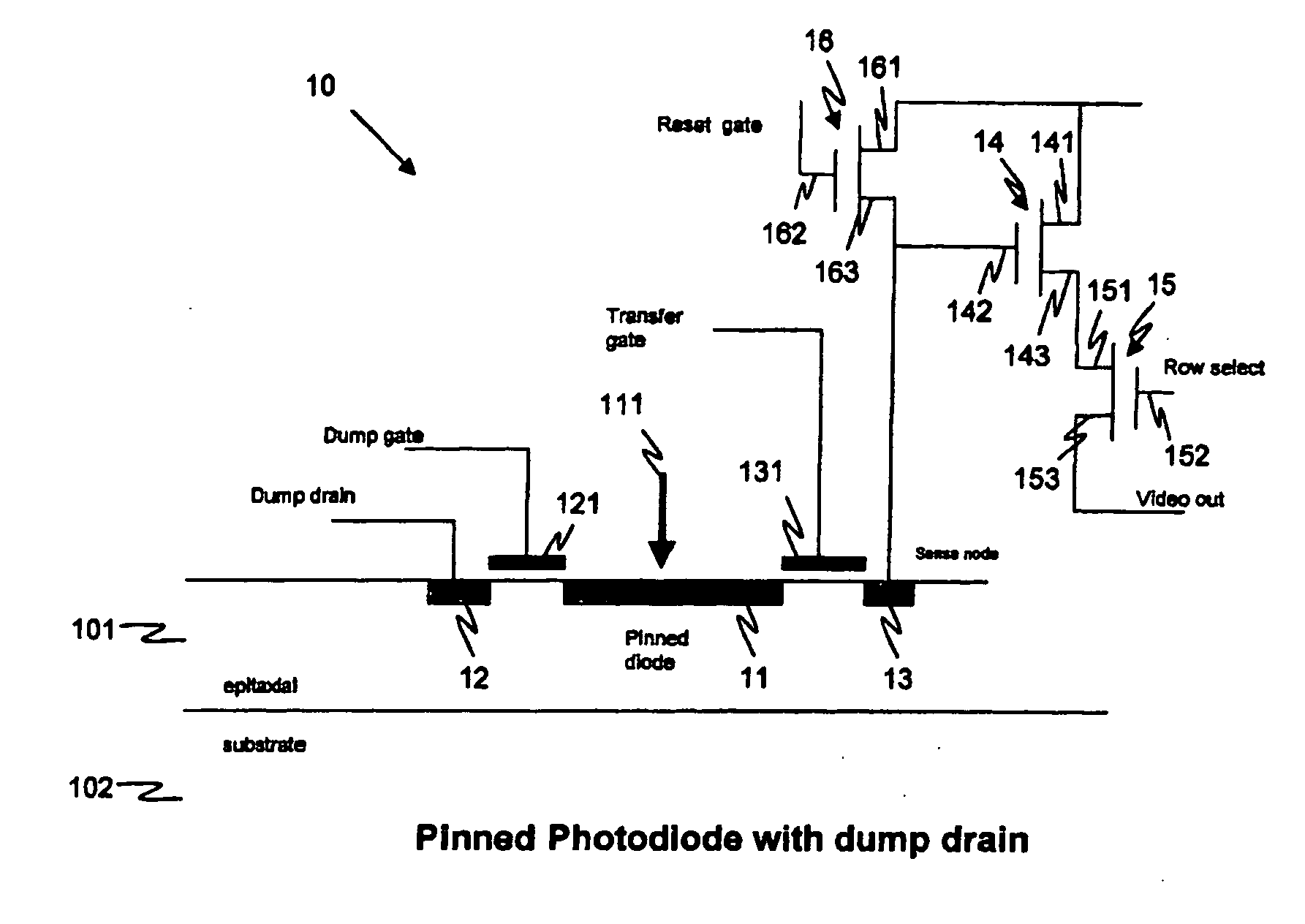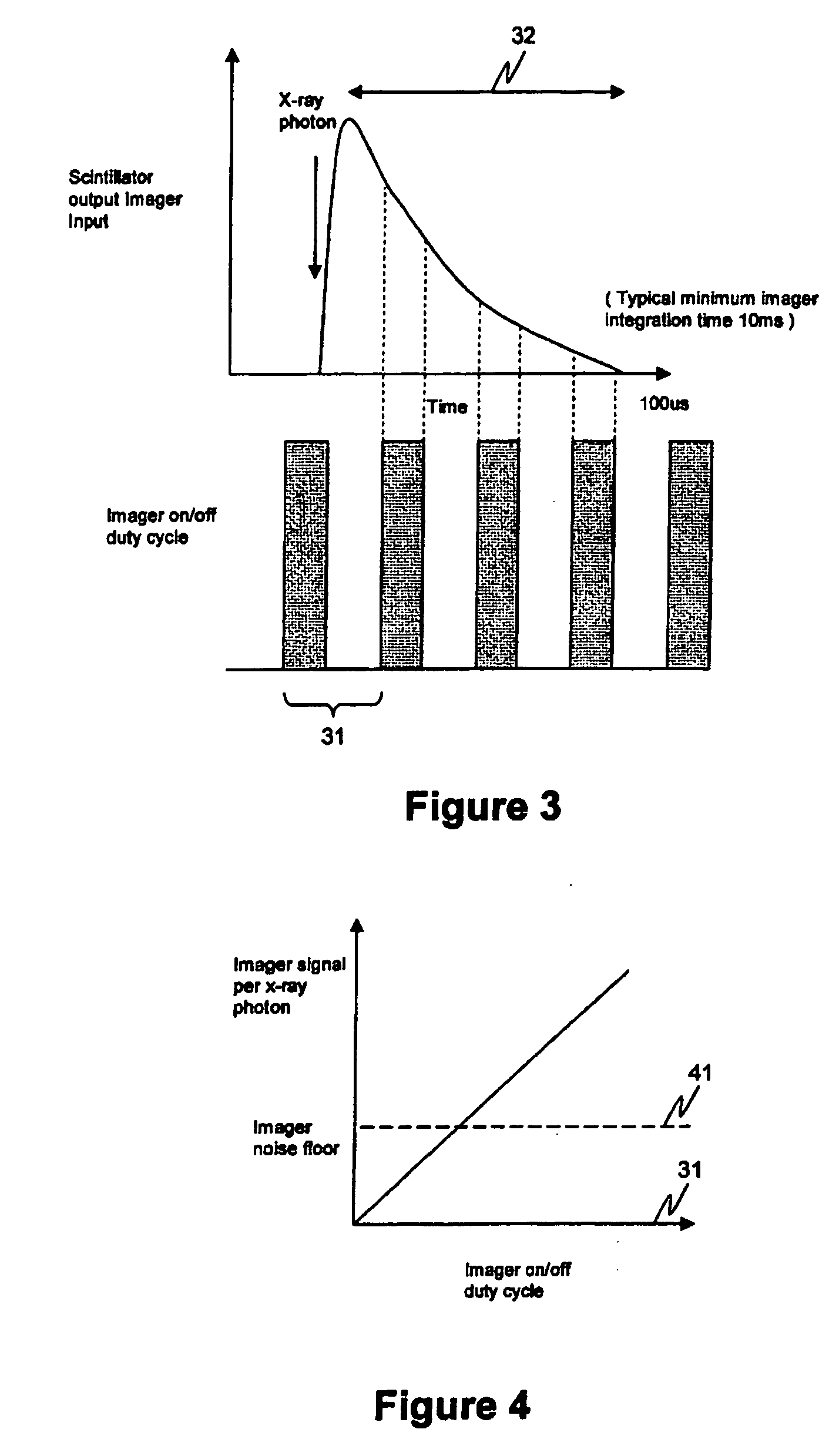Image sensor
a technology of image sensor and image, applied in the field of image sensor, can solve the problems of low signal to noise ratio, limited, and undesirable high yield, and achieve the effect of reducing fixed pattern nois
- Summary
- Abstract
- Description
- Claims
- Application Information
AI Technical Summary
Benefits of technology
Problems solved by technology
Method used
Image
Examples
Embodiment Construction
[0067] The invention may be applied to a scintillator-based image sensor in which structures in the pixel cause a charge dump / transfer action and so sub-divide the initial signal charge before it is accumulated in a storage or readout element of the pixel and subsequently converted to an output electrical signal.
[0068] Referring to FIG. 1, an x-ray sensor pixel 10 according to the invention includes a pinned photodiode 11, formed in an epitaxial layer 101 on a substrate 102, or built in silicon according to any known process, arranged to receive incident light 111 from a scintillator (not shown). Electrical charge generated by the incident light in the pinned diode 11 is transferable from the pinned diode to a dump drain 12 controlled by a dump gate 121. Charge is alternatively transferable to a sense node 13 controlled by a transfer gate 131. The sense node is connected in a known manner to a gate 142 of a buffer transistor 14. An output 143 of the buffer transistor is connected t...
PUM
 Login to View More
Login to View More Abstract
Description
Claims
Application Information
 Login to View More
Login to View More - R&D
- Intellectual Property
- Life Sciences
- Materials
- Tech Scout
- Unparalleled Data Quality
- Higher Quality Content
- 60% Fewer Hallucinations
Browse by: Latest US Patents, China's latest patents, Technical Efficacy Thesaurus, Application Domain, Technology Topic, Popular Technical Reports.
© 2025 PatSnap. All rights reserved.Legal|Privacy policy|Modern Slavery Act Transparency Statement|Sitemap|About US| Contact US: help@patsnap.com



